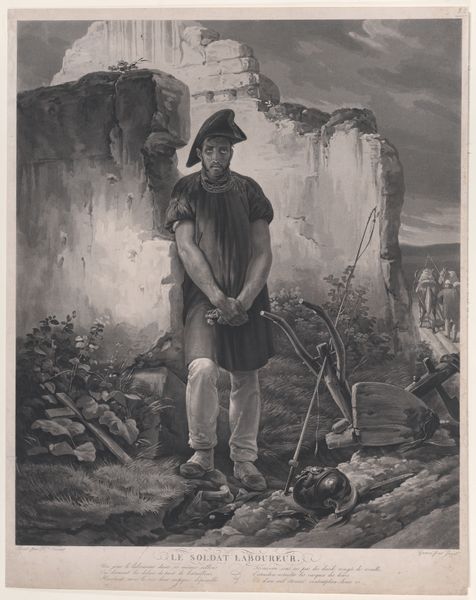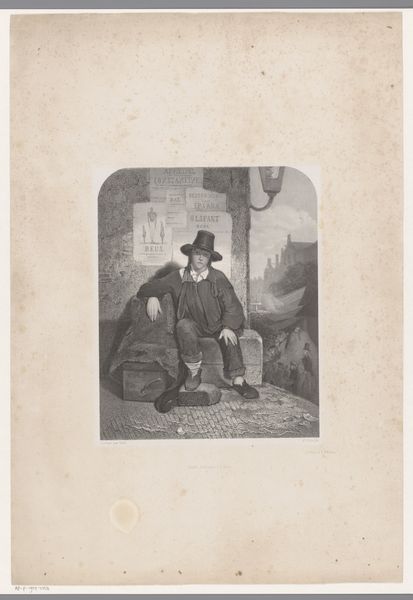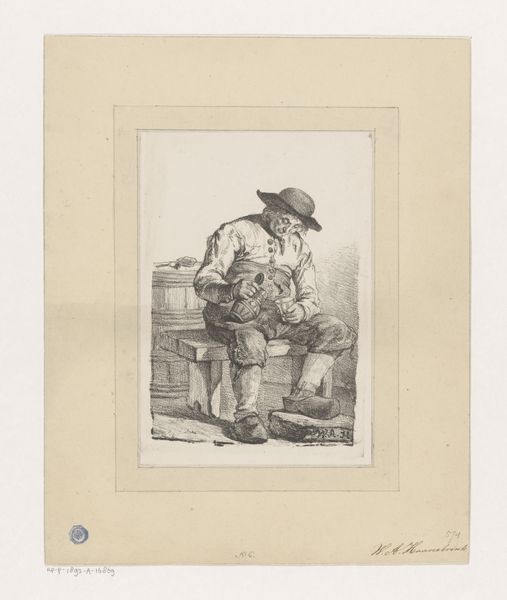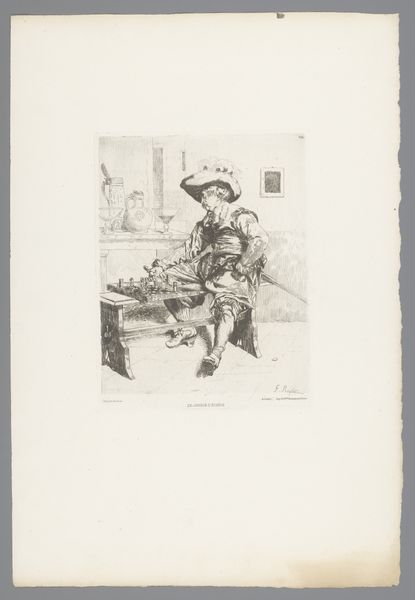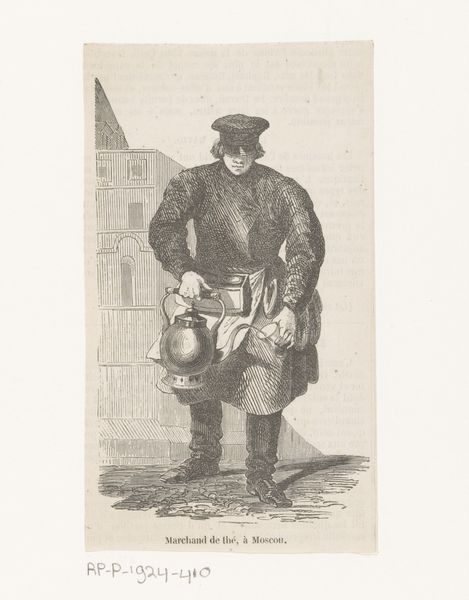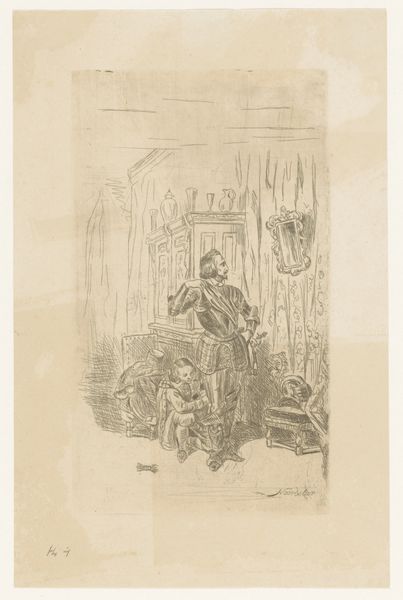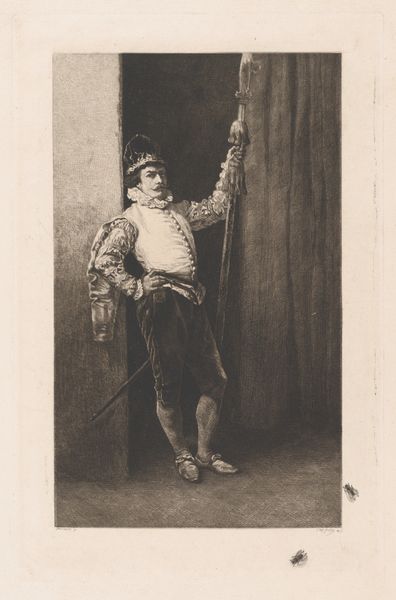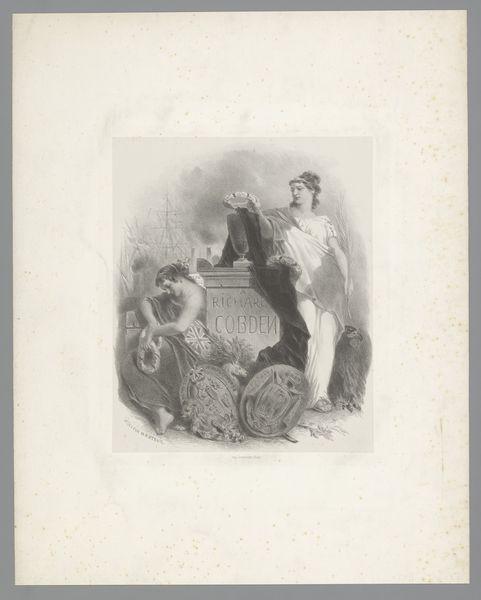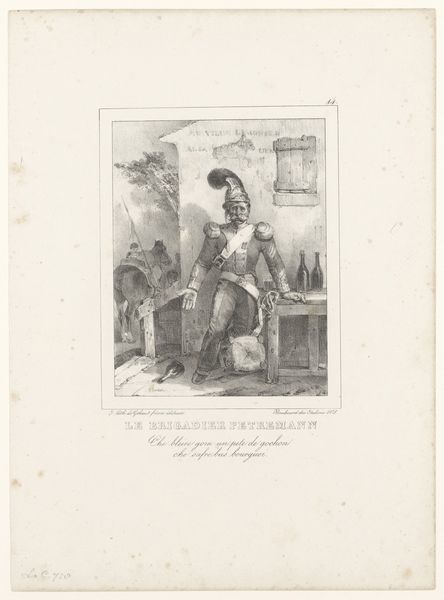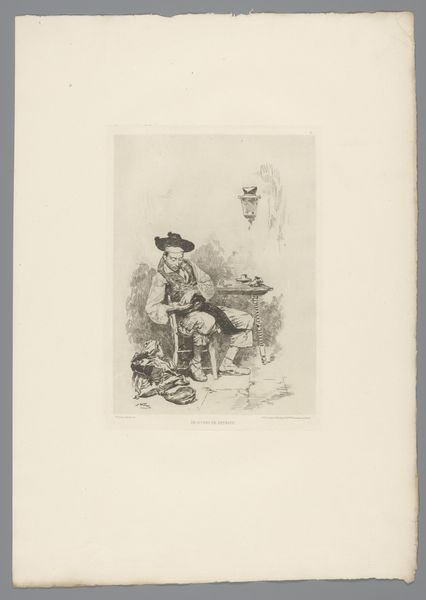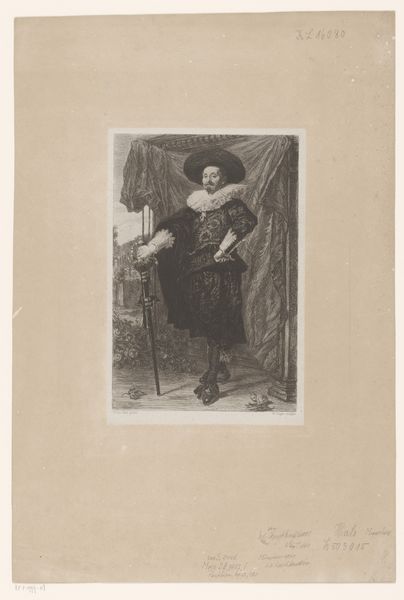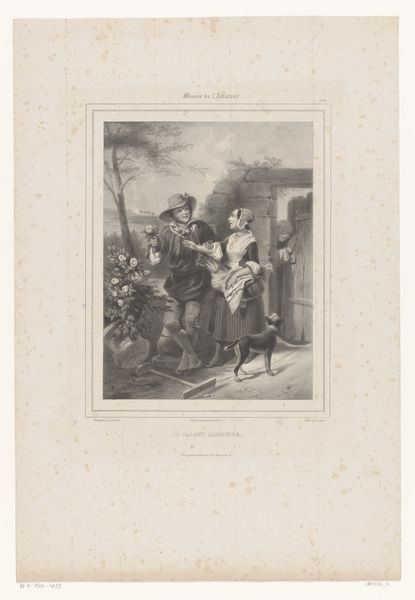
Dimensions: height 626 mm, width 459 mm
Copyright: Rijks Museum: Open Domain
This print, 'Frederik de Grote na de Slag bij Kolin' was made by Albert Henry Payne, using steel engraving. Payne, who lived in the 19th century, was a master of this demanding technique, where an image is incised into a polished steel plate, allowing for a large number of impressions. Now, consider the material transformation involved. Payne would have begun with a blank plate of steel, carefully hardened and prepared. Using specialized tools, he would have slowly and painstakingly cut lines into the surface. The depth and density of these lines determine the tonal range of the final print. The resulting image gives us access to a moment in time, captured through skilled labor. Steel engraving, which was developed in the early 1800s, was used for mass production of illustrations in books and periodicals. Payne's choice of steel engraving thus speaks to the wider context of industrialization and the rise of print culture, making imagery and information more widely accessible. It's a testament to the enduring power of skilled handwork in an age of mechanical reproduction.
Comments
No comments
Be the first to comment and join the conversation on the ultimate creative platform.
